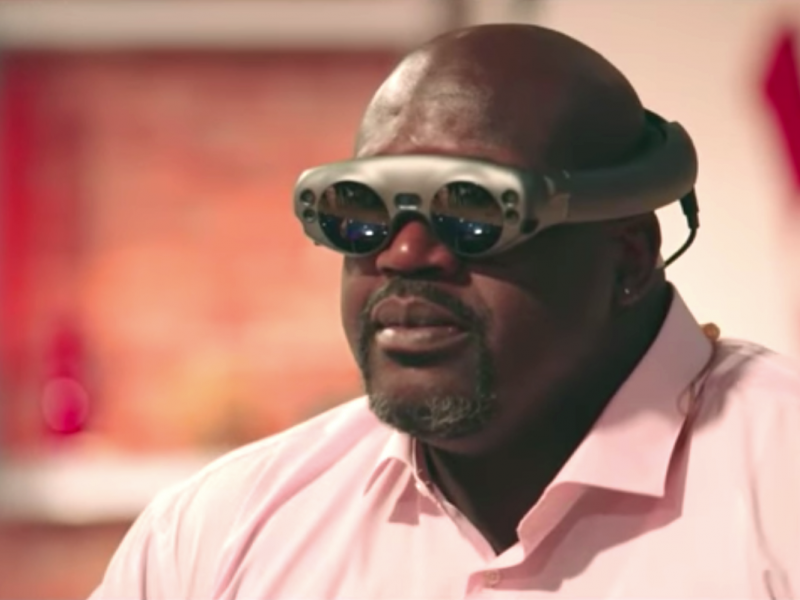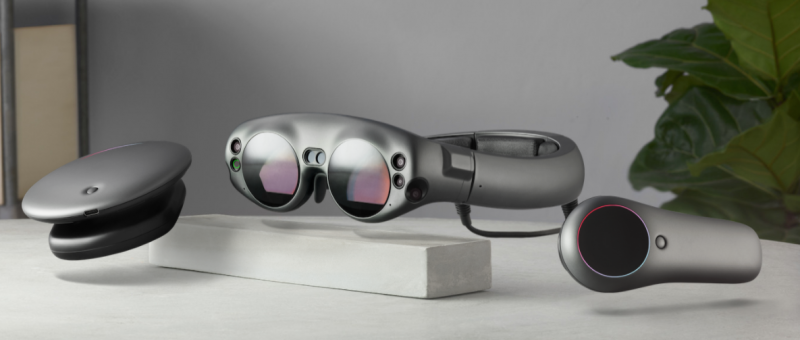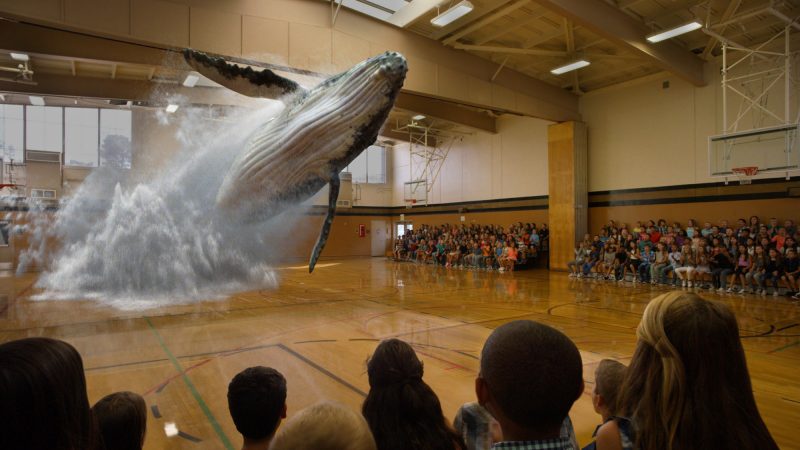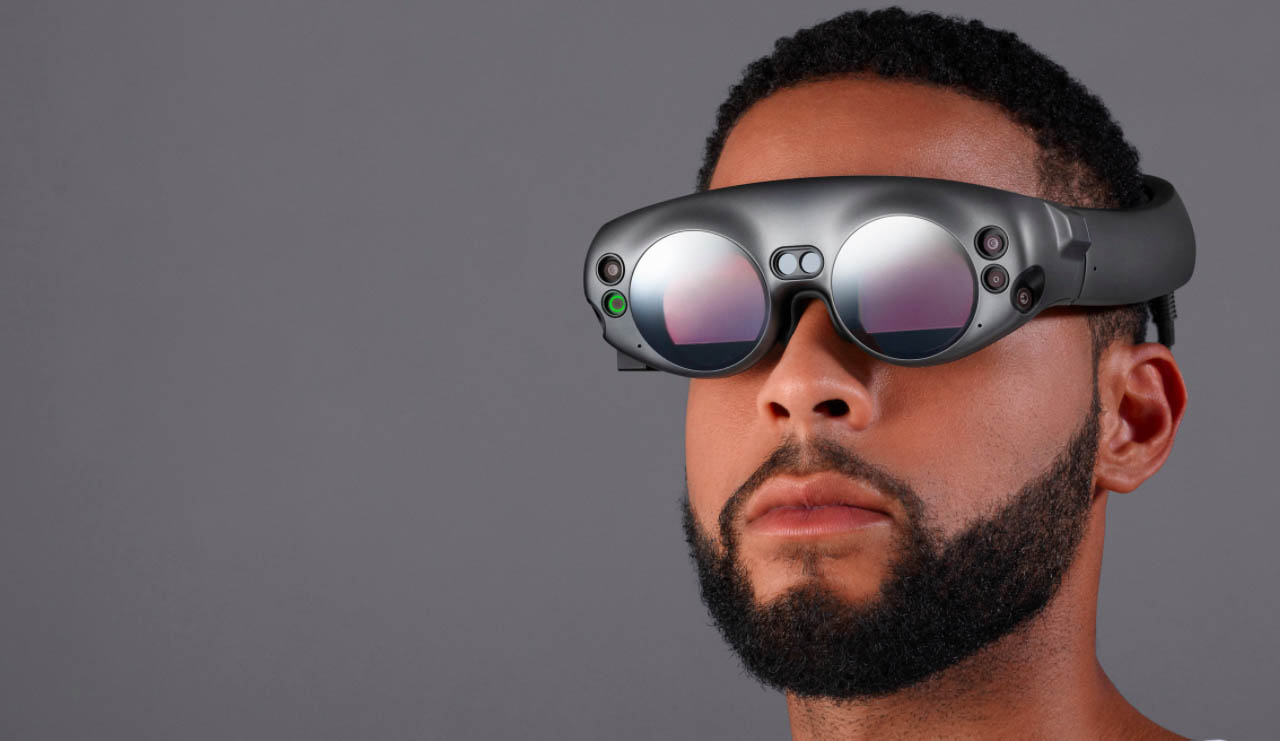After $2.3 billion in funding from the likes of Google, JPMorgan, and Alibaba, and years of outlandish hype, the Florida-based startup Magic Leap is finally peeling back the curtain on its mysterious, futuristic mixed-reality device: Magic Leap One.
The headset/computer/controller trio is the first step in Magic Leap’s plan to replace your smartphone, your TV, and your computer. The idea is simple: Instead of having a bunch of disparate computing devices across various screens, you’ll wear your computer on your eyes.
Forget about looking down at your phone to check email – the promise of mixed-reality headsets like Magic Leap One and Microsoft’s HoloLens is overlaying your digital life onto your real life. You could pull up your email in a floating window, while another floating window plays an NBA game, all while still interacting with human beings in the real world.
The first device from Magic Leap is on sale now – it costs $2,300 and starts shipping this week to customers in six US cities.
Whether Magic Leap One actually accomplishes what it aims to is another question. A handful of press outlets were invited to Magic Leap's headquarters to try out Magic Leap One, the crazy-looking device seen above. Here's what they had to say:
The Verge's Adi Robertson described the headset as such after her experience: "It doesn't seem like a satisfying computing device or a radical step forward for mixed reality."

Robertson had positive things to say about Magic Leap One, but those came with a lot of caveats. In her experience with the headset, she was shown a digital dinosaur that was visible only to her.
"The whimsical anecdote setup is supposed to emphasize how well the Magic Leap One tricked my mind into believing this impossible thing existed, which is what I'd hoped would happen last month when Magic Leap invited me to its headquarters," Robertson said. "But it just didn't happen.
"In reality, the dinosaur I see through the Magic Leap One looks genuinely three-dimensional, but pieces start getting cut off when I approach it. When a man walks behind it, I can see him slightly."
Robertson did have some positive things to say about the experience as well: "The headset looks far from utilitarian - it's like something a hacker would wear in a 'Shadowrun' larp. But against all odds, it's surprisingly comfortable."
CNET's Scott Stein shared a similar perspective: "My initial experience didn't blow me away, despite Magic Leap's promises."

"Magic Leap feels, to me, like a familiar stepping-stone more than a revolution," Stein said. "This isn't made for everyday customers yet."
Like other members of the media who got to try Magic Leap One, Stein took issue with the headset's field of view. Simply put: If you're not looking directly through the relatively limited digital window in the Magic Leap One headset, you don't actually see the digital world being presented on top of the real one.
"The display's small field of view doesn't cover everything you see in the room," Stein said. "Not being able to see a fuller view of the room's virtual objects is a serious drawback. Sometimes I lose track of things I can't see, and require sound to help me track where the augmented things are hiding, and where to turn."
Wired's Jessi Hempel said, "I tried out the Magic Leap One in a 1,000-square-foot faux-living room that had been tricked out in West Elm furniture, and it wasn't great at first."

Hempel was more forgiving. "A main menu popped up in front of me, the field of view large enough that it didn't seem narrow," she said. "But as great as this was, there were glitches. When I tried to use the hand controller to navigate to a football demo, the controller didn't respond; the experience appeared frozen."
Once rectified, those issues apparently gave way to a positive experience. "Once the headset was working, the experiences were creative and compelling," Hempel said. "The images were crisp and solid (as solid as virtual reality can be, anyway)."
That said, Hempel compared the experiences to the often shallow experiences found on other virtual-reality platforms and augmented- or mixed-reality devices. "These experiences are certainly on par with other augmented reality and virtual reality demos I have seen," she said. "Are they really mind-blowingly better than the competition? Not yet."
The Wall Street Journal's Joanna Stern liked the headset, but that came with a major caveat: "I don't suggest anyone run out to buy one — maybe not for years."
"Only developers should buy these glasses," Stern wrote of her experience with Magic Leap One. "But should you try them out? Definitely."
Like other members of the press who got to try Magic Leap One, Stern was impressed - but had some major caveats. "While not as restrictive as Microsoft's HoloLens, the Lightwear has a limited field of view that constrains the experience," Stern wrote. "Some objects appeared cut off unless I turned my head or took a few steps back."
Stern said the headset was comfortable and didn't give her any "VR-like nausea." She said it might not be ready for prime time but offered "an inspiring glimpse at the future of our interaction with technology, and each other."

